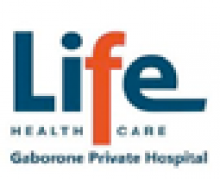Fainting occurs when blood supply to the brain is momentarily inadequate, causing brief loss of consciousness.
Summary
Fainting occurs when blood supply to the brain is momentarily inadequate, causing brief loss of consciousness. Fainting is usually not harmful, but it can have serious underlying causes and should always be taken seriously. Signs of fainting may include pallor, sweating and light-headedness. First aid involves getting the person to lie down, and restoring blood flow to the brain.
What causes fainting?
Fainting occurs when the blood supply to the brain is momentarily inadequate, causing loss of consciousness. This loss of consciousness is usually brief - a few seconds to a few minutes. Common triggers of fainting include standing for long periods, dehydration, the sight of blood, coughing, urination, having a bowel movement and emotional distress. But in some cases, the cause can't be determined.
Fainting can have no medical significance, or the cause can be serious, such as a cardiac or neurological problem. Therefore, treat loss of consciousness as a medical emergency until the signs and symptoms are relieved and a serious underlying cause ruled out.
Signs and symptoms of fainting
Before a faint, there may be warning signs and symptoms, such as:
- Pallor
- Feeling of warmth
- Weakness
- Light-headedness
- Nausea
- Sweating
- Rapid breathing (hyperventilation)
- Dimming of vision
- Difficulty hearing or ringing in the ears
These may precede either a near faint or total loss of consciousness.
First aid for fainting
If someone complains of feeling faint:
Get him or her to lie down. (If they are in a situation or place where they really can't lie down then sitting down is the next choice.) Help restore blood flow to the brain by raising the person's legs above the level of the head (about 30cm).
If someone faints:
- Check the ABCs (airway, breathing, circulation), and, if necessary, begin CPR and call emergency medical services. Continue CPR until help arrives or the person responds and begins to breathe.
- If the person is breathing but unconscious, then put them in the recovery position.
- Loosen constrictive clothing. The person should revive quickly. If the person doesn't regain consciousness within one minute, or if there are any serious injuries as a result of falling from the faint, call for emergency medical assistance. Also call immediately if there are symptoms of stroke (e.g. slurred speech or difficulty moving a limb) after fainting.
- Stay with the person while they are recovering. They may feel tired or weak for several hours afterwards.
When to see a doctor
A person who has fainted should see a doctor without delay if he or she:
- Has fainted more than once in a month
- Has a heart condition, diabetes or high blood pressure
- Is over 50
- Had no warning signs prior to the faint
- Faints when turning the head
- Is taking new medication
- Experiences chest pain, irregular heartbeat, shortness of breath or blurred vision before or after fainting
- Is pregnant
- Had any injuries from falling because of fainting
- Took longer than a few seconds to regain consciousness
Prevention of fainting
- It may be possible to prevent a fainting episode - even when you're already experiencing the telltale signs and symptoms.
- If you think you're going to faint, find a safe place to lie down and, if possible, lift your legs up. Failing that, at least sit down.
- If you're prone to fainting, these tips may help prevent further episodes:
- Talk to your doctor to help determine your specific triggers for fainting, and avoid them.
- Drink enough fluids and don't skip meals. Dehydration and not eating can lower blood pressure.
- Rise slowly from a lying or sitting position, to give your body time to adjust.
First aid kit
Every household should have a well-stocked first aid kit. Keep one in your home and one in your car. Every household should have a well-stocked first aid kit. Keep one in your home and one in your car. Store the kit in an accessible place, but out of reach of small children. You can purchase one from organisations such as St John's ambulance or buy the items separately from a pharmacy. Make sure that you know how to use the items and what they are for. Each time that you use the kit, replace any used items promptly.
What should a home first aid kit contain?
There are several different kits available, each with slightly different contents and quantities. However, most good home first aid kits will contain the following items:
- 3 x roller bandages (50mm)
- 3 x roller bandages (75mm)
- 2 x triangular bandages
- Gauze dressing
- 2 x small wound dressings
- 2 x medium wound dressings
- 2 x large wound dressings
- 1 roll adhesive tape (1m x 2.5cm)
- Roll of cotton wool for padding
- 1 pair bandage scissors
- Safety pins
- 1 eyebath
- Tweezers or forceps
- 1 x burn dressing e.g. Burnshield
- 1 tube antiseptic ointment
- 1 pair disposable gloves
- 1 mouthpiece for administering CPR
- 1 packet assorted plasters
- Calamine lotion for soothing skin irritations, sunburn and stings
- Thermometer
- Rehydration fluid such as Sorel or Rehidrat
- Measuring spoons









